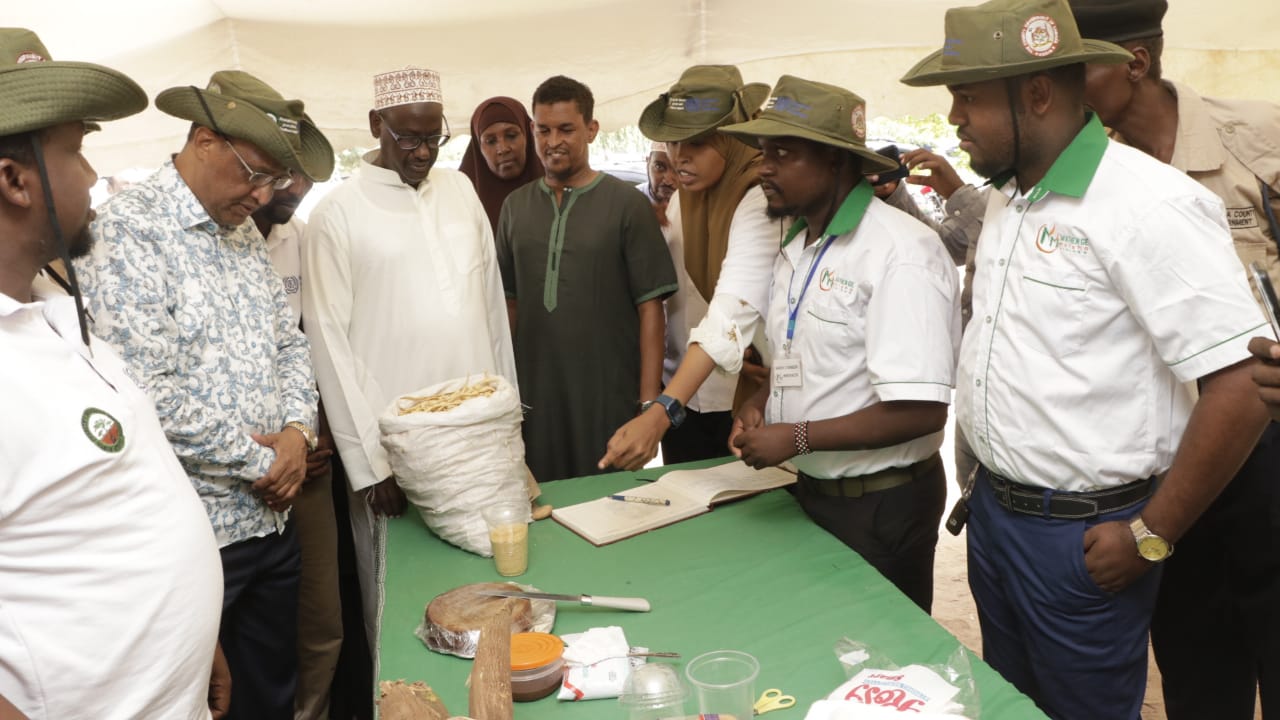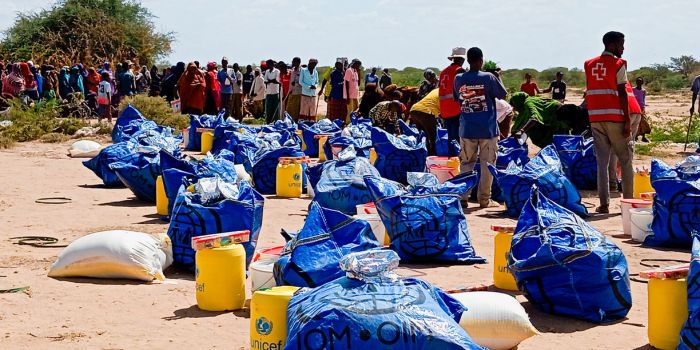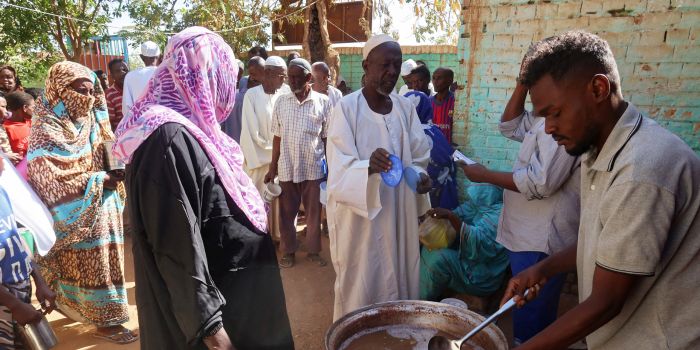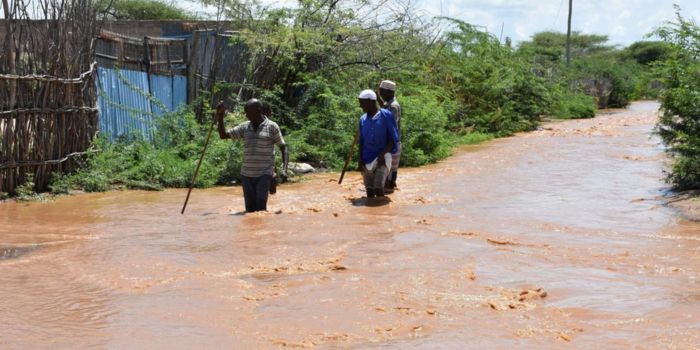Garissa launches project to turn Mathenge weed menace into fortune

By Issa Hussein |
The project, supported by the ILO through KEFRI, will help the beneficiaries manage the invasive weed through decent green jobs.
A project to transform the invasive Mathenge weed into a fortune for youth and women was launched in Garissa town on Monday.
The project, supported by the International Labour Organization (ILO) through the Kenya Forestry Research Institute (KEFRI), will help the beneficiaries manage the invasive weed through decent green jobs.
Garissa Governor Nathif Jama, who was the chief guest during the event, said the project will help residents of Garissa and Tana River counties who were massively affected by the weed, known scientifically as the proposis juliaflora.
 Garissa Governor Nathif Jama and other officials during the launch of a Mathenge tree project in Garissa Town on March 18, 2024. (Photo: Issa Hussein)
Garissa Governor Nathif Jama and other officials during the launch of a Mathenge tree project in Garissa Town on March 18, 2024. (Photo: Issa Hussein)The governor said the project will complement the Garissa County Ugatuzi na Kazi Programme, which aims to help eradicate the invasive tree that colonised the indigenous tree.
He appreciated the ILO and KEFRI for the programme that he said will reduce the impact of the tree and create job opportunities for youth, women and people with disabilities.
According to KEFRI researcher Amina Maalim Aden, the project will see the youth trained to use the invasive plant to create valuable products like animal feeds, baking flour, honey substrate, and charcoal.
She said that after bush-clearing, other indigenous trees will be planted to restore the eradicated species in Garissa and Tana River counties.
"This will be a livelihood programme that, at the same time, will complement the presidential agenda of planting 15 billion trees by 2023," Amina said.
She named other actors involved in the project, including Garissa University, which is an implementing partner.
 Garissa Governor Nathif Jama during the launch of a Mathenge tree project in Garissa Town on March 18, 2024. (Photo: Issa Hussein)
Garissa Governor Nathif Jama during the launch of a Mathenge tree project in Garissa Town on March 18, 2024. (Photo: Issa Hussein)Mulki Mohamed Deko, an environmentalist and the county's Environment director, noted that the Mathenge tree has invaded farms, and agricultural lands, blocking pathways and water corridors for both humans and livestock.
"Managing and utilising the plant through the project will help to restore the lost indigenous plants, create jobs and increase tree cover," Mulki said, adding that the project will also help mitigate climate shocks in flood-prone areas and restore the degraded land via restoration and afforestation programmes.
In their addresses, Garissa Deputy Governor Abdi Dagane Muhumed and Tana River's Mahat Ali Loka said the Mathenge tree threatened not only the environment but also livelihood.
The project follows the Cabinet's approval last week of the rollout of a national strategy and action plan for the management and control of weeds in response to ecological threats.
According to the statement by Soipan Tuya, the Cabinet Secretary in the Ministry of Environment, Climate Change and Forestry, the tree was introduced in the 1970s to mitigate soil erosion, fuelwood shortages, and other challenges in Arid and Semi-Arid Lands (ASALs), but spread rapidly and resulted in the loss of biodiversity and farmlands, increased livestock deaths, and the spread of malaria.
The minister stated that the plant has so far invaded 16 counties in Kenya, with the largest infestation being found in the following eight counties: Turkana, Tana-River, Garissa, Isiolo,
Marsabit, Kajiado, Taita-Taveta, and Baringo.
Other counties with a considerable presence of the invasive tree species are Kilifi, Samburu, Mandera, Wajir, Kwale, Lamu, Tharaka-Nithi, Meru, Mombasa, Migori, Kitui, and West-Pokot.
In February, the Isiolo County Livestock Department said it was carrying out research focused on establishing new and sustainable ways of managing and preventing the spread of the Mathenge tree, which remains a thorn in the flesh for pastoralists.
In partnership with the University of Nairobi and VSF-Suisse, the department said it would collect views from residents in Korbesa and Mnadanur on how they have been coping with the invasive species and establish if local communities have tapped into its nutritional value.
The findings from the three-month study will guide the expected implementation of a Sh42 million project aimed at strengthening the resilience of agro-pastoral communities to climatic shocks.



















